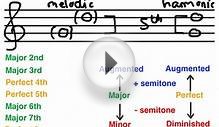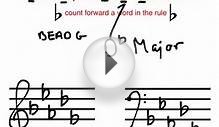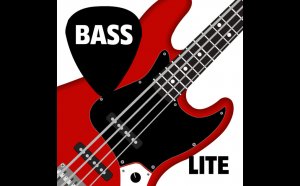
Basic Music Theory lessons
Ever wondered why music theory didn't make sense? The key to learning basic music theory is to learn and use the same systems that all us musicians use.
Music is a language. It has parts that make up the whole, and those parts are made of even smaller parts. This sentence is made of words, and these words are made of letters. To learn how to make the sentence as a whole, you have to learn the letters of the alphabet, and learn how to put them into words. Then you have to learn certain words, and learn how to put them into sentences.
Music works the same way. You learn the alphabet then put those pieces together to make musical phrases, then put those together to make a song.
What Every Musician Needs to Know
Learning basic music theory is absolutely necessary to communicate with other musicians. Whether we are writing a song together, playing a show on stage, or just jamming at the house, we have to know how to talk about what it is we're playing.
Luckily, this stuff is really easy to learn! Here are some of the essentials of music theory that you will need to know to get started.
The music alphabet is like the English alphabet. It is a system of letters that are assigned to represent sounds in music that we call notes. This is the simplest part to learn, and everything else will be based on this, so start here!
Scales are just a linear arrangement of notes. If notes are actual pitches, then scales are those pitches in a certain order. (ex. A B C D E F G) Because scales or pieces of scales are used in just about every song ever written, they are a huge piece of basic music theory.
An Interval is the distance from one note to another. Whether it's B to C (a Second) or G# to Eb (a Sixth), every interval has it's own name. This stuff is really useful in figuring out harmonies.
Chords are certain members of a scale combined into one sound. (For instance "C + E + G = CMaj" or "D + F + A = DMin".) Chords give structure, organization, and shape to a song. They make the song "sound" a certain way. Even if you are strictly a lead player, you NEED to know this. Even as a violinist, I use chords all the time to talk about the songs. I'll play that fill after the G7 chord.
Key signatures tell us the tonality or "key" of a song. It also tells us which notes the song will be using. The more you work with these, the more familiar you get with the range and scale of particular keys. Unless you want all of your songs to sound the same, PLEASE study these.
YOU MIGHT ALSO LIKE



Share this Post
Related posts
Bass Guitar theory Lessons
Bass music theory is the nuts and bolts of how music is put together, and how it relates to the neck of the bass guitar…
Read MoreBasic Music lessons
Here we cover step-by-step all the resources you’ll need to get started on the violin. This includes all the essential items…
Read More










